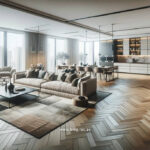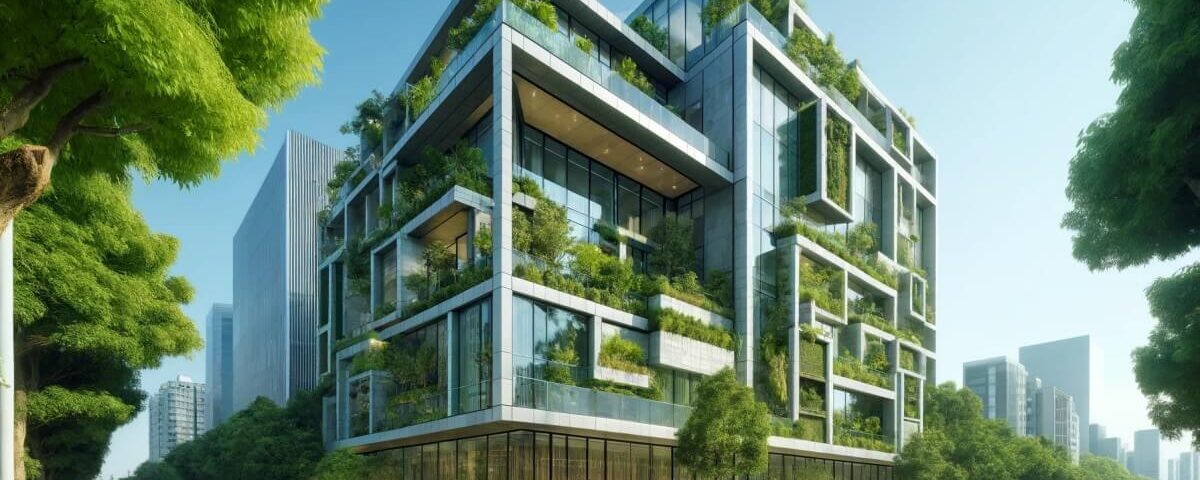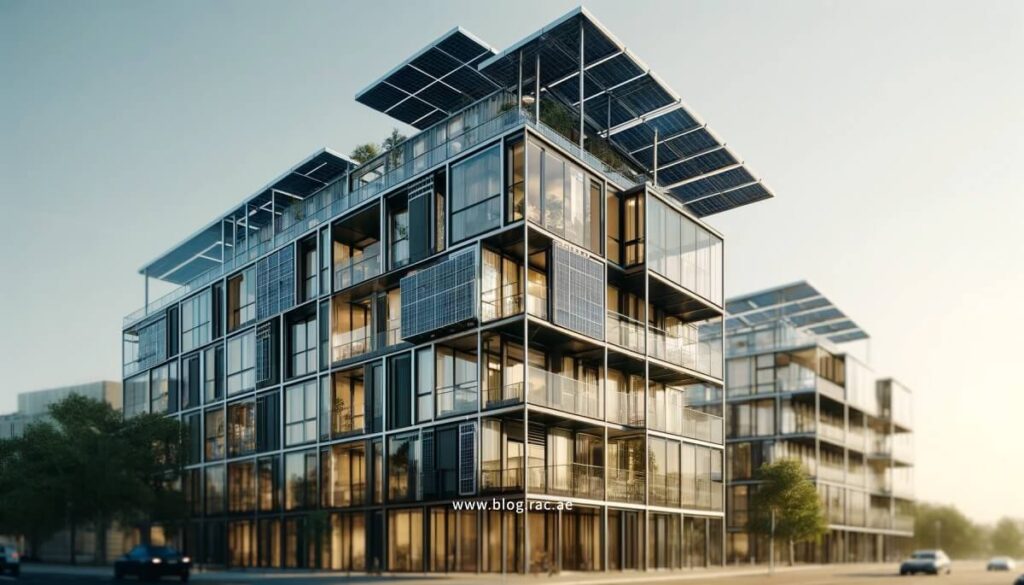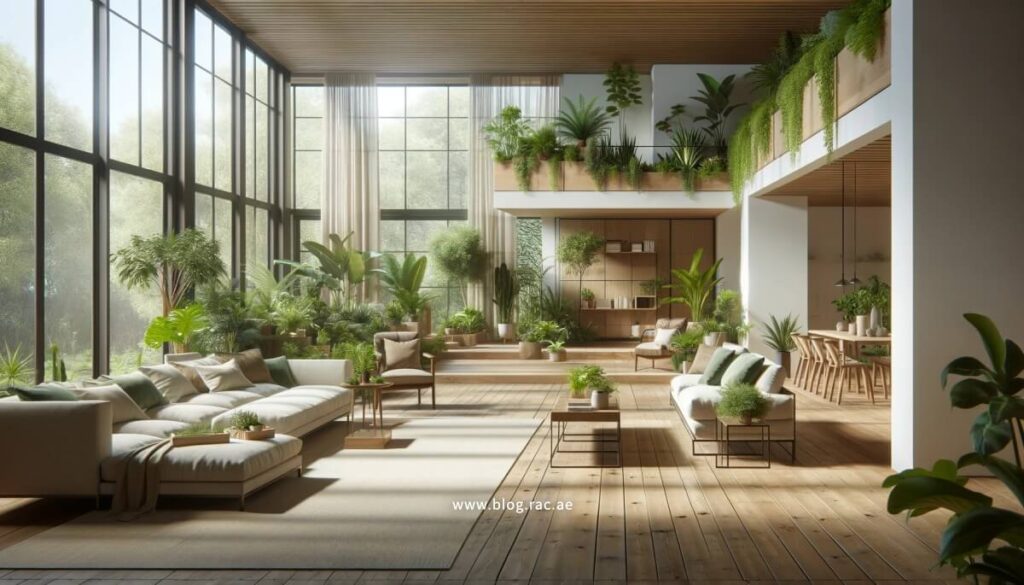
Open Concept Challenge: Creating Flow and Functionality in a Large Space
May 4, 2024
Commercial Interior Design: Transforming Business Spaces for Success
May 8, 2024Architecture and Interior Design: Crafting Beautiful and Functional Spaces

Architecture and interior design shape the spaces where we live, work, and play. These two disciplines are closely intertwined, creating an environment that is both aesthetically pleasing and highly functional. From designing the structure of buildings to arranging the smallest details inside them, architecture and interior design bring a blend of art and science to everyday spaces. Whether you’re curious about how to revamp your home or interested in how architecture influences cityscapes, this article will guide you through the essential concepts of these two disciplines.
Table of Contents
The Relationship Between Architecture and Interior Design
Architecture provides the framework, while interior design breathes life into the space. Together, they create an environment that reflects purpose and personality.
The Architectural Backbone
Architecture is the foundation on which all interior designs rest. The architecture of a building determines its shape, size, and structure. Modern architects often focus on sustainability and energy efficiency, crafting structures that balance aesthetics with eco-friendly considerations. This architectural backbone gives designers a canvas to express creativity, while also providing the essential elements that the structure needs to stand firm.
Interior Design Brings It to Life
Interior design focuses on the look and feel of internal spaces, using colors, textures, furniture, and art to create a cohesive environment. Designers tailor spaces to meet the needs of their occupants, whether that means creating a peaceful bedroom or an inspiring office. They also account for practical aspects like acoustics, ergonomics, and lighting.
Connecting Functionality with Aesthetics
Retail Design on a Budget
For small business owners, retail spaces present unique challenges. The layout must be intuitive and attractive, and the overall design should encourage customers to linger. Luckily, even on a budget, successful retail design is possible. Incorporating architectural elements such as shelving and lighting can enhance product visibility, while thoughtful interior design creates an inviting ambiance. Discover more about how one small business achieved success by prioritizing “Retail Design on a Budget” here.
Mental Health Design
Spaces have a profound impact on mental health, and this is where architecture and interior design can truly shine. Designing environments that promote well-being requires careful consideration of color psychology, natural light, and spatial flow. For instance, adding greenery, maximizing natural light, and incorporating soft textures can reduce stress and enhance productivity. Learn how “Mental Health Design” can transform spaces to nurture well-being here.
Trends and Innovations
Architecture and interior design are constantly evolving, with new trends emerging as our lifestyles change.
Sustainable Design
Eco-friendly design is gaining popularity. Green architecture incorporates features like solar panels, natural ventilation, and sustainable materials. Designers are also upcycling old furniture and using reclaimed materials to reduce waste and create unique, personal pieces.

Smart Homes
Smart technology is transforming both architecture and interior design. Automated lighting, climate control, and security systems can now be integrated seamlessly into any space. These technologies make homes more energy-efficient and convenient.
Biophilic Design
Biophilic design emphasizes the human connection to nature. This trend includes natural light, plant life, and organic shapes. By bringing the outdoors inside, designers create calming, restorative spaces.

Conclusion
Architecture and interior design shape not only our surroundings but also how we feel and function within them. Their partnership balances aesthetics and utility, producing spaces that are as beautiful as they are practical. Whether you’re thinking about sustainable structures, smart homes, or simply revamping your living room, architecture and interior design can offer a world of creative possibilities.
Resources:
- Learn more about architecture and its history on Wikipedia.
- Discover how interior design impacts everyday spaces here.
FAQs
1. How do architecture and interior design complement each other?
Architecture sets the foundational structure of a building, determining its form, layout, and structural integrity. Interior design builds upon this framework by crafting the atmosphere within, adding style and purpose. Together, they balance aesthetics and function to create harmonious spaces. While architecture defines the shape and scale, interior design refines it with color, furniture, and decor, making spaces both beautiful and livable.
2. Why is sustainable design important in architecture and interior design?
Sustainable design aims to minimize environmental impact by reducing energy consumption and utilizing eco-friendly materials. In architecture, this means designing buildings that are energy-efficient, incorporate renewable resources, and minimize waste. Interior designers focus on using sustainable furniture and materials, like reclaimed wood or recycled fabrics, to reduce the ecological footprint of their projects. Sustainable design benefits the planet and also creates healthier living and working environments for people.
3. How does mental health design affect productivity?
Mental health design focuses on creating environments that promote well-being. Thoughtful use of natural light, greenery, and calming color schemes helps reduce stress and anxiety. Improved air quality and acoustics also contribute to clearer thinking and better focus. An environment that nurtures mental health can lead to greater productivity, as individuals feel more energized and motivated in these carefully designed spaces.
4. What are some practical ways to improve retail design on a budget?
A few simple yet effective methods can enhance retail design without breaking the bank. Rearrange the layout to create a logical flow, making it easier for customers to navigate. Use lighting creatively to highlight specific areas or products. Incorporate inexpensive but eye-catching signage and artwork to create a brand identity. Strategic shelving and smart use of mirrors can also make a small retail space feel larger.
5. How can biophilic design improve living spaces?
Biophilic design integrates natural elements into indoor spaces, such as plants, natural light, and organic shapes. These features connect occupants with nature, providing benefits like reduced stress and enhanced creativity. Including plants can improve air quality, while natural light regulates circadian rhythms, improving sleep patterns. By mirroring nature indoors, biophilic design creates calming, restorative spaces that are healthy and aesthetically pleasing.
6. What are some key features of smart homes?
Smart homes leverage technology to automate and control household functions, like lighting, climate, security, and entertainment systems. These features make daily life more convenient and energy-efficient. For instance, automated lighting can turn off when a room is empty, and smart thermostats adjust the temperature based on occupancy. Voice-controlled assistants and security systems provide peace of mind and reduce energy usage.
7. What are some emerging trends in sustainable design?
Emerging trends include passive house design, which focuses on super-insulated walls, heat recovery ventilation systems, and solar panels to drastically cut energy consumption. Modular construction, where building components are prefabricated, reduces material waste. Designers are also increasingly using upcycled and repurposed materials to give new life to existing resources, creating one-of-a-kind, eco-friendly spaces.
8. How do architects balance aesthetics and function in their designs?
Architects blend aesthetics and function by considering the purpose and needs of the space while developing the form. They create practical layouts that accommodate daily activities and incorporate visually appealing materials, shapes, and textures. Structural integrity is always prioritized, but architectural features like windows and facade materials are carefully selected to complement the design while also providing natural light, ventilation, and energy efficiency.
9. What role does lighting play in interior design?
Lighting is crucial in interior design because it defines the mood and functionality of a space. Natural light is often preferred, as it enhances well-being and creates an open atmosphere. Artificial lighting comes in ambient, task, and accent forms, each serving a distinct purpose. Ambient lighting provides general illumination, task lighting focuses on specific activities, and accent lighting adds drama or highlights features.
10. Why are architectural and interior design trends constantly evolving?
Trends evolve due to societal changes, technological advancements, and shifting aesthetic preferences. As lifestyles change, so do the demands on buildings and interior spaces. Technological innovations introduce new materials and smart devices, enabling more efficient and adaptive designs. In addition, sustainability has become a priority, with architects and designers adopting practices that promote environmental stewardship and healthier living environments.

0 Comments
На данном сайте доступен мессенджер-бот “Глаз Бога”, позволяющий проверить сведения о человеке по публичным данным.
Инструмент активно ищет по фото, анализируя публичные материалы онлайн. С его помощью можно получить 5 бесплатных проверок и полный отчет по фото.
Сервис проверен на август 2024 и охватывает фото и видео. Бот сможет проверить личность в открытых базах и покажет информацию за секунды.
Глаз Бога
Такой сервис — идеальное решение при поиске людей удаленно.
В этом ресурсе вы можете получить доступ к боту “Глаз Бога” , который способен проанализировать всю информацию о любом человеке из общедоступных баз .
Этот мощный инструмент осуществляет анализ фото и показывает информацию из государственных реестров .
С его помощью можно пробить данные через Telegram-бот , используя фотографию в качестве поискового запроса .
проверить авто по вин
Система “Глаз Бога” автоматически анализирует информацию из множества источников , формируя подробный отчет .
Подписчики бота получают ограниченное тестирование для проверки эффективности.
Сервис постоянно обновляется , сохраняя скорость обработки в соответствии с законодательством РФ.